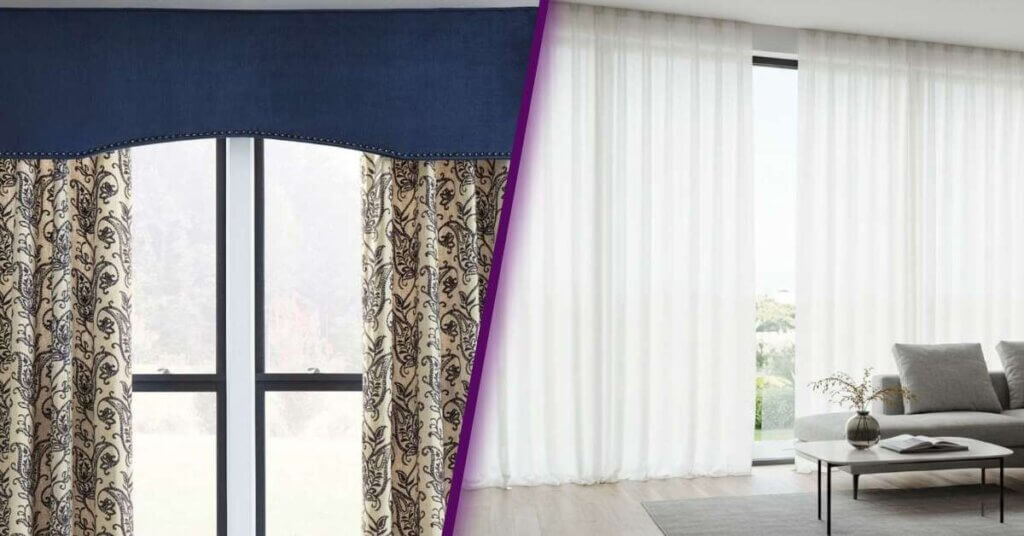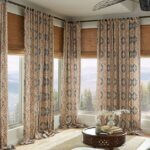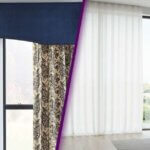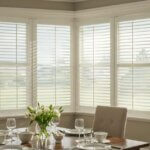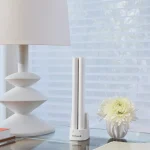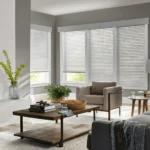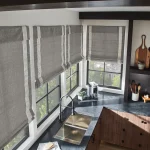When it comes to window treatments, “drapes” and “curtains” are often used interchangeably—but they’re not the same thing. Understanding the difference can help you make the best choice for your home. Drapes are typically longer, lined, and more formal, while curtains are lighter, often unlined, and more casual. Both bring beauty and function to your space, but they serve distinct purposes in home decor, privacy, light control, and insulation.
In this blog, we’ll break down the details of drapes vs. curtains, compare their benefits, and guide you toward deciding which option best fits your style, needs, and budget.
What’s the Main Difference Between Drapes and Curtains?
While both drapes and curtains are fabric window treatments, their construction, purpose, and overall aesthetic differ significantly.
Curtains: Casual and Versatile
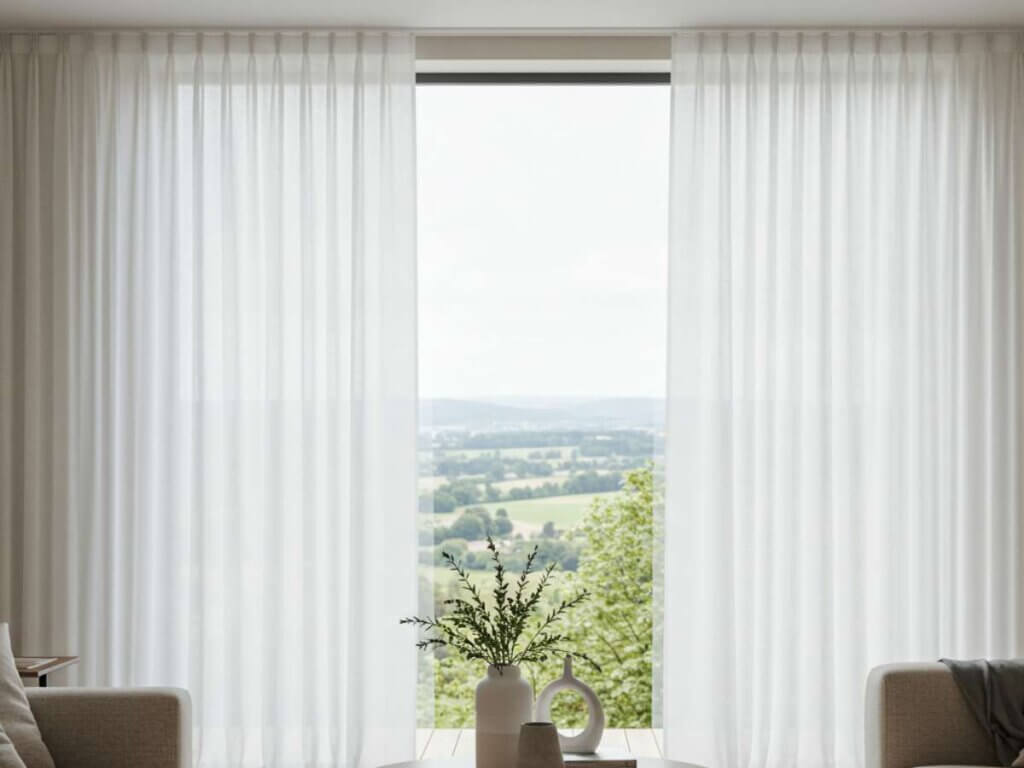
- Fabric & Weight: Curtains are usually made from lightweight materials like cotton, linen, or polyester.
- Style & Functionality: They’re often unlined, making them perfect for letting natural light filter through while still offering a degree of privacy.
- Best Uses: Ideal for kitchens, bathrooms, and living rooms where a breezy, casual look works well.
- Length: They typically fall to the window sill or just below, though longer options are available.
Drapes: Formal and Functional

- Fabric & Weight: Drapes are crafted from heavier materials such as velvet, silk, or brocade, and often include lining or interlining.
- Style & Functionality: Their structure makes them excellent for blocking light, improving thermal insulation, and even absorbing sound.
- Best Uses: Perfect for bedrooms, dining rooms, or formal spaces where light control and elegance are priorities.
- Length: Drapes extend from above the window frame to the floor, or even pool slightly on the floor for dramatic effect.
Style and Aesthetic Appeal
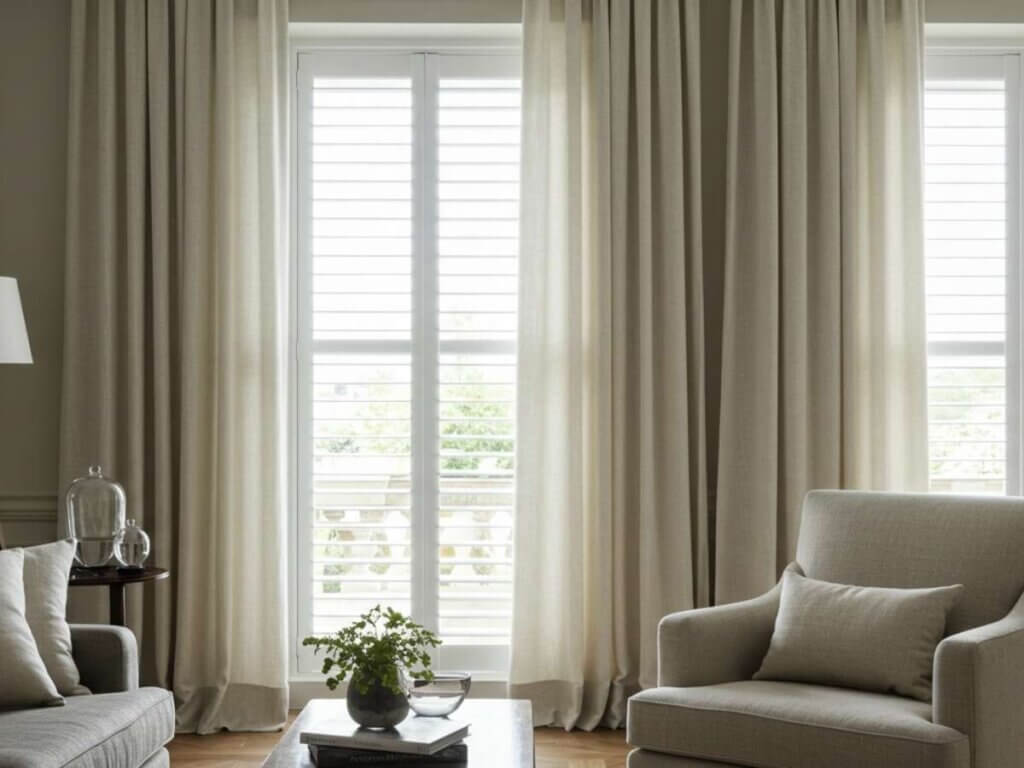
Both options enhance interior design but create different moods.
- Curtains add softness and charm to a space. Patterns, sheer panels, and playful colors bring personality into casual or modern interiors.
- Drapes deliver sophistication. Their structured pleats, opulent fabrics, and full-length panels give rooms a polished, luxurious feel.
Think of curtains as everyday wear and drapes as evening attire, both stylish, but with different occasions in mind.
Functionality and Purpose
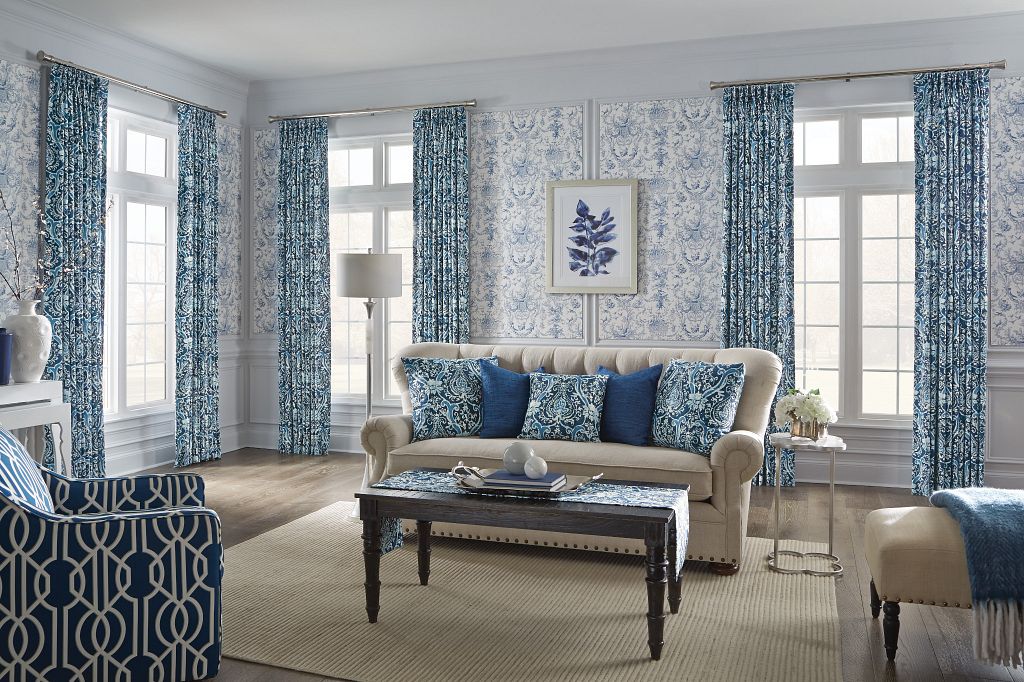
When comparing drapes vs. curtains, functionality is just as important as style.
Light Control and Privacy
- Curtains provide partial light control and moderate privacy, depending on the fabric. Sheer curtains brighten a room but limit privacy.
- Drapes, especially blackout drapes, block sunlight entirely and give you complete privacy when closed.
Thermal Insulation and Sound Absorption
- Unlined curtains offer minimal insulation.
- Drapes, with their lining and heavier fabric, help keep a room warm in winter, cool in summer, and quieter year-round.
Budget Considerations
- Curtains are usually less expensive, especially when purchased ready-made.
- Drapes tend to cost more due to their heavier materials, linings, and often custom construction.
Custom vs. Ready-Made Options
When choosing between drapes and curtains, consider whether you prefer a custom fit or a ready-made solution.
- Custom Drapes and Curtains: Tailored to your windows, offering precise sizing, premium materials, and unique design details such as pleats, grommets, or layered panels.
- Ready-Made Options: Budget-friendly and easy to install, though they may not fit as seamlessly or provide the same level of durability.
Choosing the Right Option for Your Home
So, how do you decide between drapes vs. curtains? Consider:
- Your Room’s Purpose: Bedrooms and formal dining areas benefit from drapes, while kitchens and family rooms work well with curtains.
- Your Style Preferences: If you like airy, casual vibes, curtains may be better. If you prefer bold, elegant design, drapes are ideal.
- Your Functional Needs: For blackout, thermal insulation, and sound control, drapes perform best. For quick updates and affordability, curtains shine.
Key Takeaways: Drapes vs. Curtains
Feature | Drapes | Curtains |
Fabric & Material | Heavy fabrics (velvet, silk, brocade) with lining | Lightweight fabrics (cotton, linen, polyester), often unlined |
Length | Floor-length, sometimes pooling on the floor | Typically shorter, can be sill-length or slightly below |
Style & Aesthetic | Formal, elegant, structured | Casual, versatile, soft |
Light Control | Excellent—especially with blackout lining | Moderate—allows natural light depending on fabric |
Privacy | High privacy when closed | Limited privacy with sheers or lightweight panels |
Thermal & Sound | Strong insulation and sound absorption | Minimal insulation or sound absorption |
Cost | Higher, especially for custom-made | Lower, especially with ready-made options |
Best For | Bedrooms, dining rooms, formal spaces | Kitchens, living rooms, casual spaces |
FAQs About Drapes and Curtains
1. Can I combine drapes and curtains on the same window?
Yes. Many homeowners layer sheer curtains under drapes for versatility. This allows natural light during the day and full privacy or blackout functionality at night.
2. Do drapes always need to touch the floor?
Not always, but floor-length is traditional. Some drapes are designed to “kiss” or “pool” on the floor, while tailored modern styles may stop just above it.
3. How do I maintain drapes and curtains?
Curtains can usually be machine-washed, depending on the fabric. Drapes, especially those made of delicate or lined materials, often require professional cleaning to preserve their structure and quality.
Making the Choice That Fits Your Life
Both drapes and curtains bring beauty and function to your home. Curtains provide an affordable, versatile, and casual look, while drapes deliver elegance, insulation, and superior light control. The right choice depends on your lifestyle, design preferences, and the specific purpose of each room.
Ready to upgrade your window treatments but unsure which option suits your home best? At Made In The Shade Denver South, our experts can help you choose between drapes vs. curtains, or even combine both for a layered look. Schedule your in-home consultation today and find the perfect fit for your space.

